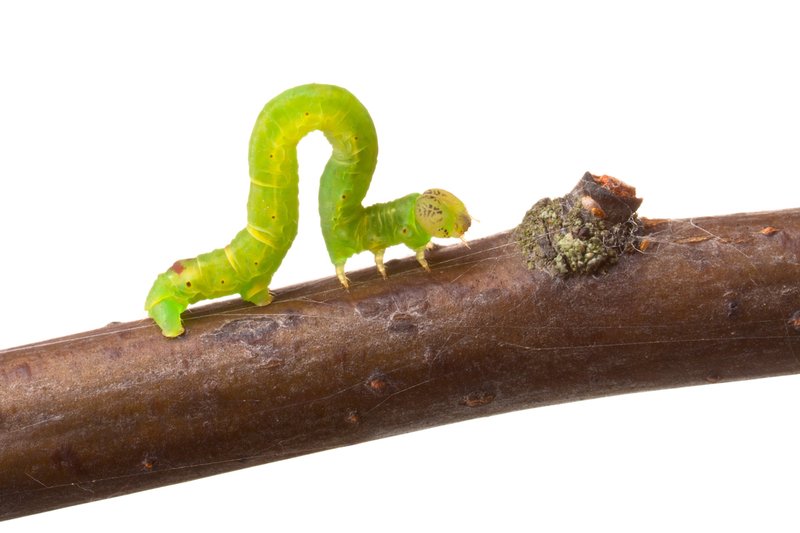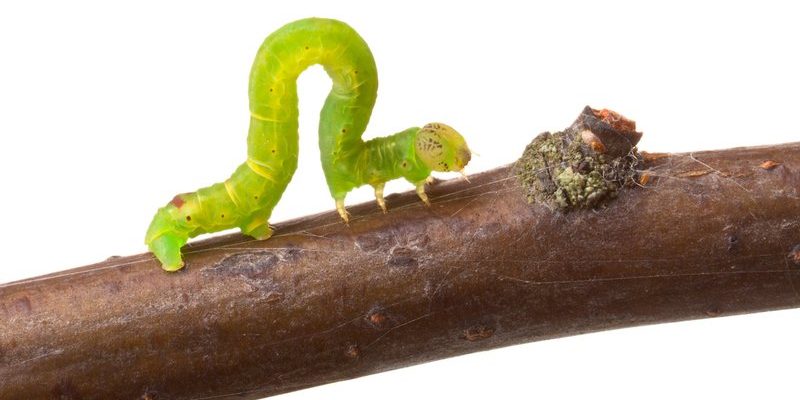
Inchworm damage can range from minor leaf loss to serious health threats for your tree. Understanding how to identify this damage is crucial for maintaining a healthy landscape. So, grab your favorite cup of coffee, and let’s dive into the world of inchworms and how to spot their damage before it’s too late.
What Are Inchworms?
Inchworms are actually the larvae of certain moths, and they’re known for their distinctive *measuring* or *inching* movement. They don’t crawl like other caterpillars; instead, they draw their bodies up and then stretch them forward, giving them that unique gait. Most commonly, you’ll find them on trees like oaks, maples, and fruit trees. Though they’re small—ranging from about 1 to 2 inches in length—these little guys can pack a punch when it comes to damage.
These pests are often green or brown, making them blend seamlessly into their surroundings. This camouflage not only helps them evade predators, but it also makes it tricky for you to spot them. If you notice some of your tree’s leaves looking a little worse for wear, inchworms might be the reason—so it’s important to be vigilant!
Signs of Inchworm Damage
You might be wondering, *how do I even know if my tree has inchworm damage?* Good question! There are a few telltale signs to watch for.
First, check for **defoliation**, which is just a fancy term for leaf loss. Inchworms love to munch on leaves, especially young, tender ones. If you see more bare branches than usual, it could indicate that inchworms have been having a feast. Besides looking out for missing leaves, keep your eyes peeled for **skeletonized leaves**. This means that the outer edges are eaten away, while the inner veins remain intact. It almost looks like someone took a bite out of the leaf and left the framework!
Lastly, you should look for the presence of these pests themselves. You might spot them hanging from their silk threads, or maybe even crawling along the branches. If you see them crawling across your hand, it’s a sure sign that your tree is hosting some unwanted guests.
Identifying Types of Inchworm Damage
Not all inchworm damage is created equal. Depending on the species of inchworm, the type of damage can vary. For instance, the **Eastern Tent Caterpillar** is known for creating large webs in the branches where they reside. While this may not initially seem harmful, these webs can actually trap moisture and lead to fungal infections.
Compare that to the **Fall Webworm**, which also creates webs but tends to feed on the outer leaves of a tree. This kind of damage can lead to more severe defoliation as the season goes on. Understanding the differences helps in determining the best course of action for your tree’s health.
If you’re unsure about which inchworm species you’re dealing with, consider snapping a few pictures and researching online or consulting with a local arborist.
The Life Cycle of Inchworms
To tackle inchworm damage effectively, it’s helpful to know how these pests live and thrive. Inchworms undergo a simple life cycle consisting of four stages: egg, larva (the inchworm stage), pupa, and adult moth.
In the spring, female moths lay tiny eggs on the leaves of trees. Once the eggs hatch, the larvae get to work munching on the leaves. This is when you’re most likely to notice damage. After feeding for several weeks, inchworms will find a safe spot to pupate. Eventually, adult moths emerge and start the cycle all over again.
Knowing their life cycle can help you time your interventions perfectly. For example, targeting them during the larval stage when they’re actively feeding will yield the best results.
How to Treat Inchworm Damage
If you’ve determined that your tree has inchworm damage, don’t panic! There are a few ways you can effectively tackle the problem.
First, mechanical removal can be quite effective. You can either handpick the inchworms off your tree or use a strong spray of water to dislodge them. Make sure to do this early in the morning when they’re less active.
If the infestation is severe, you may want to consider using an *insecticidal soap* or a *natural pesticide*. Products containing Bacillus thuringiensis (Bt) are particularly effective against these larvae and can help reduce the population without harming beneficial insects.
It’s always a good idea to follow the application instructions carefully, and consider consulting with a professional if you’re unsure. Remember, what you spray on your tree can affect its overall health, so choose wisely!
Prevention is Key
You know the saying: “An ounce of prevention is worth a pound of cure.” This couldn’t be more true when it comes to inchworm damage. Keeping your trees healthy is the first line of defense against these pests.
Start by ensuring your trees are well-watered and that they become disease-resistant. A healthy tree can often withstand minor infestations without much issue. Additionally, regular pruning can help improve air circulation, making it harder for pests like inchworms to thrive.
Lastly, consider planting native species that are naturally resistant to these pests. Not only will they look great in your yard, but they’ll also require less maintenance overall.
Caring for your trees is much like nurturing a garden. You have to be attentive and aware of changes around you. Inchworm damage may seem like a minor issue at first, but if ignored, it can lead to bigger problems down the road. By learning how to identify the signs of damage, understanding the life cycle of inchworms, and taking proactive measures, you can help your trees live their best life.
So, the next time you’re admiring the trees in your yard, take a moment to check for those sneaky inchworms. Keeping an eye out for these little pests can save you a lot of trouble later on. Happy tree tending!

